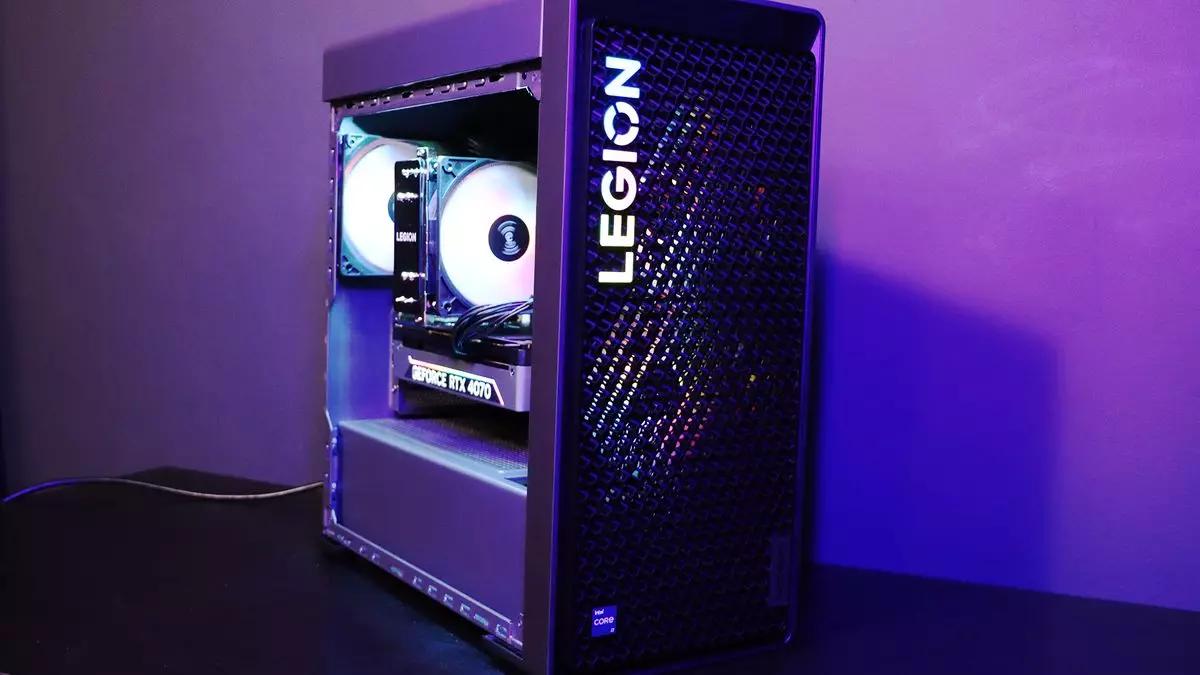The October Prime Day, often referred to as a sequel to the summer edition, has rapidly evolved from a mere shopping event into a critical retail moment on the calendar for many consumers. Dubbed variously as “Prime Day MK 2” or simply a precursor to Black Friday, its strategic timing aligns perfectly with the consumer impulse for bargains before the holiday season. Despite a reputation for inflated pricing masquerading as discounts, this year’s event revealed a noteworthy departure, presenting a plethora of genuinely compelling deals that piqued the interest of both tech enthusiasts and casual shoppers alike.
Among the standout offers were a gaming PC featuring the RTX 4070 Super for an alluring $1,100, alongside the Lenovo Legion Go handheld at $550, and other products like the Razer DeathAdder V3 Pro, which hit record low prices. These deals were not merely fleeting; they lingered post-sale, creating opportunities for those who missed the initial wave. For example, the RTX 4070 Super build and the Legion Go remain available at competitive prices even after the event’s official close, spotlighting how Prime Day’s promotions often extend beyond anticipated sales windows.
Understanding the Price Dynamics
A key aspect to deciphering the efficacy of the deals this October lies in understanding the seasonal pricing trends. While some discounts felt orchestrated, ingeniously derived from previously inflated price points, the reality is that many products were indeed offered at reduced costs. This apparent dichotomy raises an intriguing question: why were there so many substantive deals this time around compared to previous sales events?
One significant factor appears to be the nearing end of the current hardware generation, characterized by the vacuum that exists as consumers await new releases. With next-gen components starting to surface, particularly in the domain of CPUs and GPUs, manufacturers are likely feeling a pressing urgency to liquidate existing inventory. The impending arrival of AMD’s RDNA 4 GPUs and Nvidia’s expected RTX 50-series suggests that the tech landscape is on the cusp of a shift. Companies are acutely aware of the economic implications of being left with older stock when consumers inevitably gravitate toward the latest versions.
This impending hardware shift resonates deeply with buyers. The knowledge that upgrades are imminent naturally influences purchasing behaviors. Many savvy shoppers are likely inclined to hold off on larger purchases, particularly those related to high-end gaming systems, as they anticipate better products just around the corner. It fosters a precarious balancing act for retailers and system builders targeting prospective buyers; without significant markdowns, they risk being left with outdated technology that may not appeal once next-gen options debut.
Moreover, the same principles govern a wide array of peripherals and complementary technology. As consumers upgrade their systems, they frequently seek additional accessories or devices, elevating the urgency for sellers to discount these items in harmony with systems. The idea that all eyes are on an impending hardware refresh aligns retailer strategy with customer expectations.
Given the backdrop of incredible deals during October Prime Day, speculation naturally arises concerning the implications for upcoming shopping events, particularly Black Friday. If October’s deals served as a warm-up, then one could argue that Black Friday could potentially present an even broader array of discounts, especially as the tech world moves ever closer to new releases.
Nonetheless, prospective buyers must tread cautiously. For those aiming to invest in high-performance systems, it is crucial to consider that waiting a few months may yield a better deal. The advent of new graphics cards often precipitates a drop in prices for existing models but could create a temporary window where newer systems are not yet in competition with older ones. Thus, budget-conscious shoppers might discover notable bargains even as the latest innovations come to market.
The October Prime Day underscored the evolving dynamics of consumer sales strategy in the tech industry. With retailers eager to move stock amidst a landscape anticipating new technology, consumers have emerged as significant beneficiaries of this shift. As both excitement and caution mark the path toward future sales, the experience gleaned from this year’s October Prime Day serves as a reminder that now, more than ever, shopping savvy is crucial. With Black Friday visuals on the horizon, staying informed and ready to act could deliver unparalleled value to the discerning consumer.

